Despite having spent over a year in Morocco, I had never heard of the oasis town of Assa when a friend urged me to visit in order to see Sahrawi poetry and folklore for myself. I barely had time to pack, buy bus tickets, and book a hotel room in time for the annual ‘mawsim’ festival, which took place from November 28 to December 1. Assa’s mawsim, which coincides with the celebration of Mawlid (the Prophet Muhammad’s birthday), turned out to be a multilingual showcase of many semi-overlapping local histories and vernacular literatures of Morocco. Assa also revealed a type of local multilingual I had never considered before: that of the mingling between Hassaniya-speaking Arab nomads and their settled Tashelhiyt-speaking Amazigh (Berber) neighbors.
After climbing up the topmost tower of the historic Assa fortress and surveying the natural surroundings, it immediately became clear to me why this place has attracted waves of human settlement for centuries- from an unknown Pagan period to Medieval Portuguese invasions. The hill hugged by the old kasr (castle) walls declines down to a wide plateau, forming the perfect gathering place for anything from nomads’ temporary neighborhoods to monthly markets. An oasis feeds a line of palm trees which make the dry desert landscape appear lush, and small garden plots dot the scattered residences adjacent to the valley. Although tourism remains scarce, even during the mawsim, there are several guesthouses which blend naturally with the historical architecture. Assa’s kasr is made with petrified palm trunks as supports and beams, filled out by a combination of mud, straw, and brick- a very different look from the famous tile mosaics of Fez or the red walls of Marrakech.
The old kasr, which consists of several towers, a winding wall, a fortress, and now-crumbling residences, was built by two Amazigh tribes: the Ida Oumlil and Ida Ounguit. No one is sure exactly when it was established, but it probably was before the adjacent zawiya (monastery) was built in the 14th century. Assa contains one of the oldest cemeteries in Morocco which, interestingly, is still in use. Upon entering, the first headstones rising from the ground are marked as recently as 2012, but, walking further and further towards the hills, the headstones gradually become little more than smoothed slabs jabbing pointily at the sky. There are also three domed tombs, marking the graves of local Sufi saints. Assa has a reputation as a place of sanctity, and legend has it that 366 Muslim saints are buried in the town. Perhaps the mystique surrounding Assa is best summarized by the 12th century Sufi work Kitab al-Ibriz, which repeated the local legend that there are only two places where the spirits of all of the Muslim saints gather together at once: in the holy city of Mecca, and in Assa, on the night of the Mawlid.
Based on local oral histories and on a recent excavation in the Oued Noun region, it is believed that a lost city is under the ground of Assa, evidence that it was populated even during the pagan period. Then there are markers of bygone Christian and Jewish populations in the symbols nailed above the doorways. Said Aadi, who is from Assa but currently lives in Jadida and works for the Ministry of Interior, explained that Assa was different from other Moroccan cities in that there was not a separate Jewish quarter. In Assa, Jewish Moroccans distinguished themselves particularly in carpentry and craftwork, partly because their Muslim neighbors felt more comfortable having a Jewish handyman inside the family’s private sphere than an unrelated Muslim man mingling with the women of the household. When I asked Aadi how people knew such details about Assa’s social history, he said that they were stories passed down through generations.
While geographically Assa is situated in an oasis, it is also adjacent to a political faultline. Assa is located 100km north of the theoretical border of the Western Sahara- a disputed territory that most Moroccans refer to as ‘The Moroccan Sahara’ or, simply, the South of Morocco. Although Assa is not part of the territory Sahrawi separatists have demanded for their own state, the town has been entangled in the conflict by virtue of the many Sahrawis who are settled there or who have historical ties to the oasis[1]. As if straddling this divide did not muddy the waters enough, another level of ambiguity is reflected in the term ‘Sahrawi’ itself. While Anglophone writers and researchers have almost exclusively used ‘Sahrawi’ to refer to the traditionally nomadic population which speaks the Hassaniya dialect of Arabic, many Moroccans objected to my using the term ‘Sahrawi’ in this way. They pointed to the fact that the word literally means ‘Saharan,’ and thus a Tashelhiyt speaker living in the village of Tantan is no less ‘Sahrawi’ than a nomadic Hassaniya-speaker circulating the desert. However, given the cultural politics of the region, the Moroccan government has taken more interest in showcasing Hassaniya poetry and culture than it has in honoring the Amazigh history of the Oued Noun region[2]. Even in Arabic, ‘Sahrawi’ still primarily signifies a Moorish man in the oversized, billowing blue robe of the nomads or a woman in wrapped in the flowing melhafa. In Assa, however, many people speak both Hassaniya and Tashelhiyt and move freely between these histories and cultures. We even met a local poet who composes in both vernaculars.
Within Morocco, Assa is best-known for the aforementioned Sufi zawiya. The zawiya was founded by al-Shaykh ‘Izza in the 14th century, and it is widely referenced as the first of its kind in all of the Sahara[3]. When the Portuguese invaded the region in the 15th century, the zawiya led a successful armed resistance. While there are no known Portuguese literary or historical sources which mention Assa, the resistance and the subsequent marriage of one of the zawiya’s sheikhs to a Portuguese prisoner of war are still alive in Assa’s local lore. The zawiya itself is still active, and plays an important role in religious education. According to education director ‘Aamar al-Tawif, students between the ages of 7-14 come from all regions of Morocco, as well as from Mauritania and sub-Saharan Africa, to study a combination of Islamic subjects alongside social sciences, mathematics, and French.
On the other side of the oasis lies the town of Assa, which was mostly built without central planning. Here one can find the former regional colonial office, although the building is not sign-posted or well-maintained. According to Dr. Bouzid Laghla, there was also once a watchtower attached to the post which, sadly, fell into disrepair that left it unrecognizable. Lt Henri-Pierre Perrin, one of the last French officers to guard this post, wrote L’aventure Marocain (1979) about his experiences. Although it is difficult to find other sources which describe Perrin’s life or his role in the colonial government, there is a news article which mentions his kidnapping during the Moroccan struggle for independence[4]. Assa was also mentioned briefly in Orientalist Émilien Jean Renou’s Description géographique de l’empire de Maroc (1846).
I was struck by how well the locals had committed Assa’s history to memory, and how everyone from passerbys to the guesthouse staff seemed to know the significance of different structures and symbols within the kasr. For example, multiple people pointed out that a large, smooth stone which appeared to be an ordinary step was actually an ancient butcher’s block. At the same time, many residents of Assa expressed deep concern about the fact that the town’s history remains unwritten, and thus could fade with the next generation. This was the topic of an impromptu seminar that the residents set up in a plaza of the kasr while the official state-sponsored festivities continued in the plateau below. With the exception of a couple of performances of Amazigh music, the schedule of academic panels, press conferences, and performances, along with the trade fair, were focused on Hassaniya culture- again reflecting assumptions about who is ‘Sahrawi’.
The performance of midih, or praise poetry, is integral to Mawlid celebrations the world over. Midih is a form of worship which usually centers on poetically recounting the virtues of the Prophet of Islam, although there is also midih about Muslim saints. Given Assa’s layered history, it is unsurprising that the Mawlid continues to be a multilingual event where many different oral traditions are showcased together under this unifying theme. One night, an ensemble from Tangier performed a musical variety of midih sung in Classical Arabic while, a 15-minute walk away, an Amazigh troupe sang the ‘Ahwash’ over banging drums and wailing flutes. The performers, decked out in traditional white robes with sashed belts and daggers, swayed and shrugged in unison, and an audience member dressed in the traditional Hassani dra’a joined them, melding in effortlessly. The students of the zawiya also stayed up reciting a traditional oeuvre of midih: poems including the Mimiya by Abu Faras Hamdati, Busiri’s Hamza, and Bin Malik’s Alfiya- which, al-Tawif explained, are the poems recited on the Mawlid throughout Morocco. The mawsim concluded with a large ceremonial slaughter of a camel on Friday and then late into the night ensembles sung tributes to the Prophet in Hassaniya.
To revisit the fear of Assa’s residents: is the history of this beautiful oasis crossroads still unwritten? Although Assa does not currently have the well-researched, verified, and academically sound history book it deserves, this characterization is a slight exaggeration. Dr. Bouzid Laghla wrote his dissertation on the oral histories of Assa’s zawiya, and the famous architect Salima Naji– who has been charged with restoring the Kasr- produced the book Ksar d’Assa in 2012. However, the history of the city does remains incomplete without hearing the local stories that are still so alive to the people from here. Perhaps Assa is not exceptional in this regard.
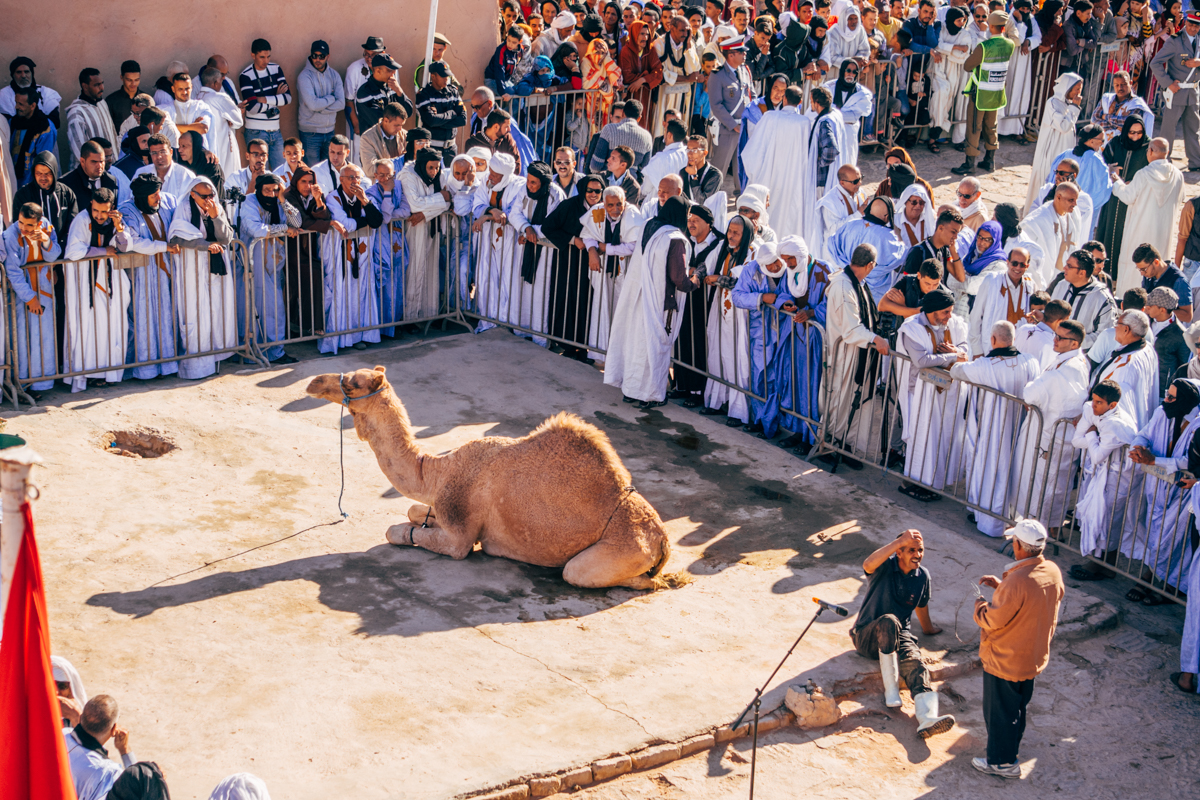
Assa’s mawsim concluded with a ceremonial slaughter of a camel. © Walid Bendra 2017
- See Walid Bendra’s online portfolio for more pictures of the Assa Mawsim.
- Paper: “Poetics of Diaspora: Sahrawi Poets and Postcolonial Transformations of a Trans-Saharan Genre in Northwest Africa” by Tara F. Deubel, published in Saharan Crossroads (features an interview with Mohamed Jghagha, a Hassaniya-speaking poet from Assa).
- Podcast: “The art of praise poetry in Moroccan literature” presented by Dr. Chokri al-Bakri (in Arabic).
- Blog feature: “Mythology: The Assa zawiya in the popular imagination, a legend of holiness” (in Arabic)
- News feature: “The tribes of Oued Noun harmonize between the Amazigh and the Hassani without any tension” (in Arabic)
- News feature: “Assa Kasr: a journey through the history of a great place with a rich memory” (in Arabic)
Notes
[1] According to Jacob Mundy, Assa and adjacent cities were attacked by the Polisario Front in 1984 (see Conflict and Insurgency in the Contemporary Middle East, p. 219 and 224 ) and L.E. Smith notes that separatist activity has come from Assa, including prominent Sahrawi independence activist Ali Tamek (see The Sahara: Past, Present, and Future, p. 298).
[2] For more information about the trend of the Moroccan state sponsoring festivals and events promoting Hassaniya poetry and culture, see Dr. Tara F. Deubel’s chapter in Saharan Crossroads.
[3] In addition to being a description we heard repeatedly, this was also asserted by al-Mukhtar al-Soussi in an Hespress article from 2014.
[4] See the April 1957 edition of The Modern Review


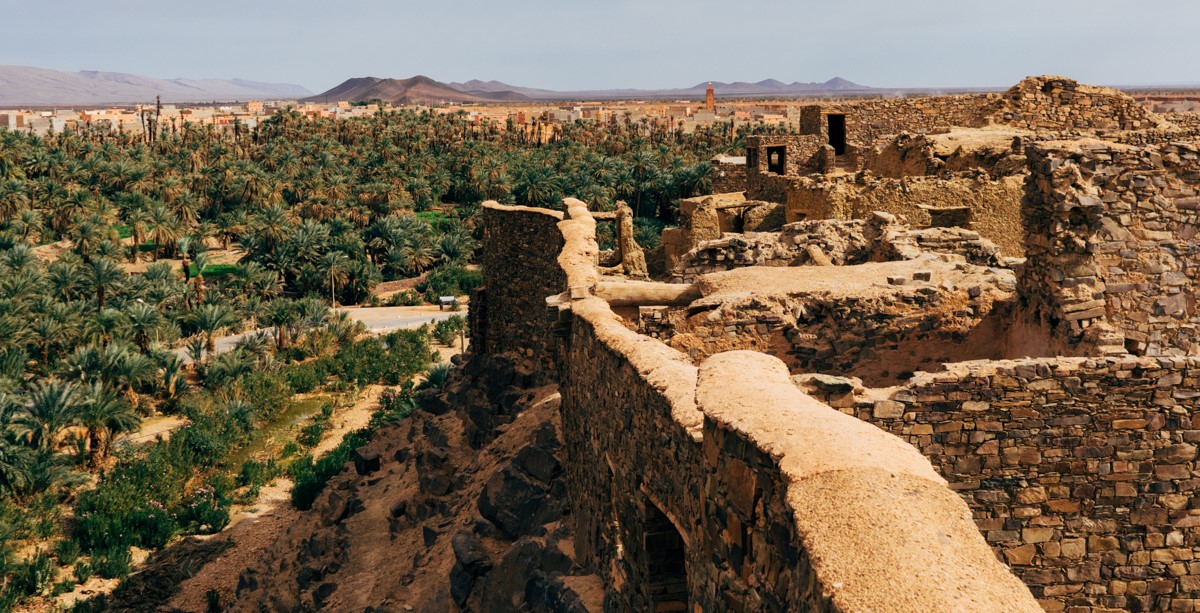
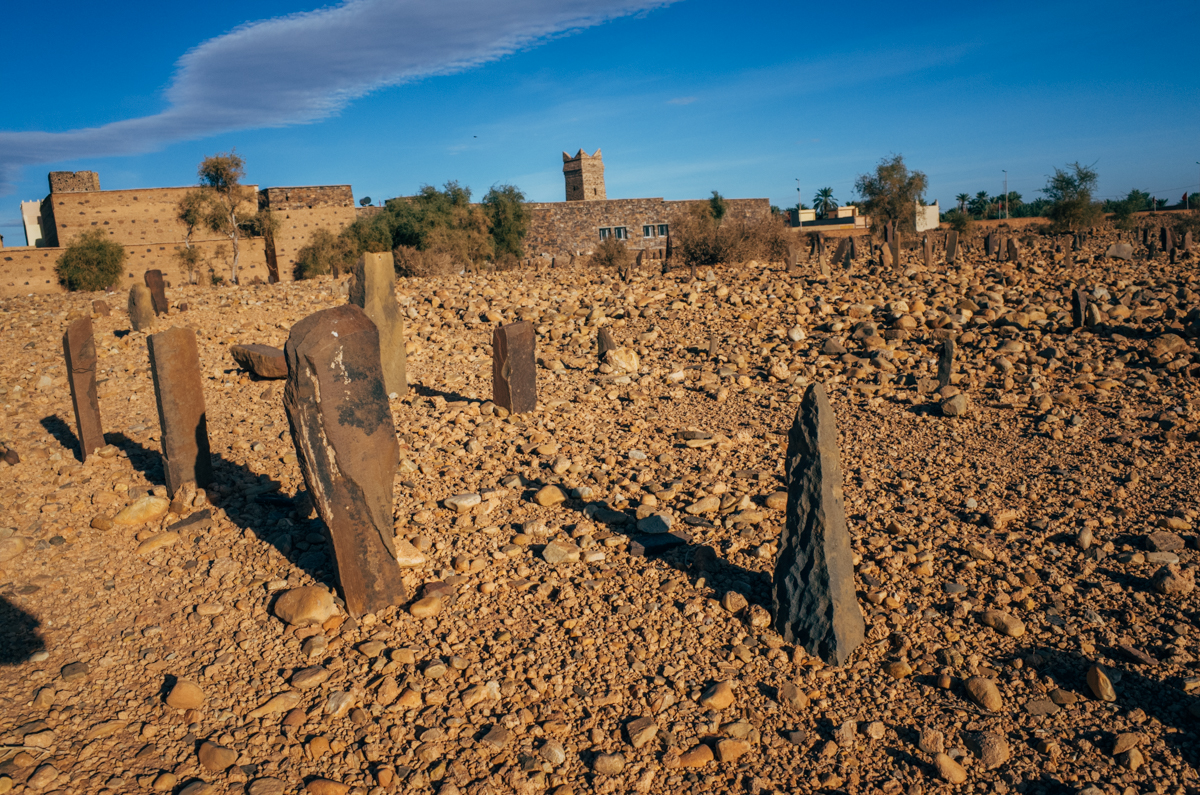
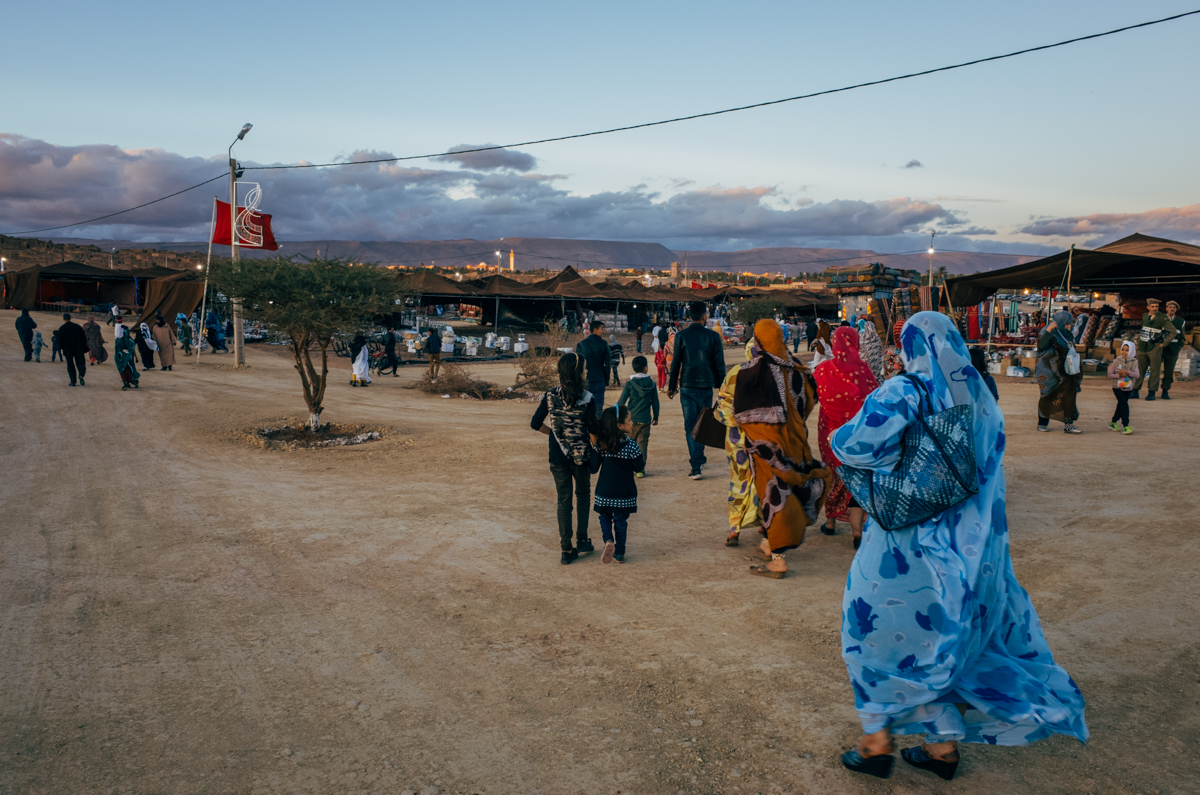
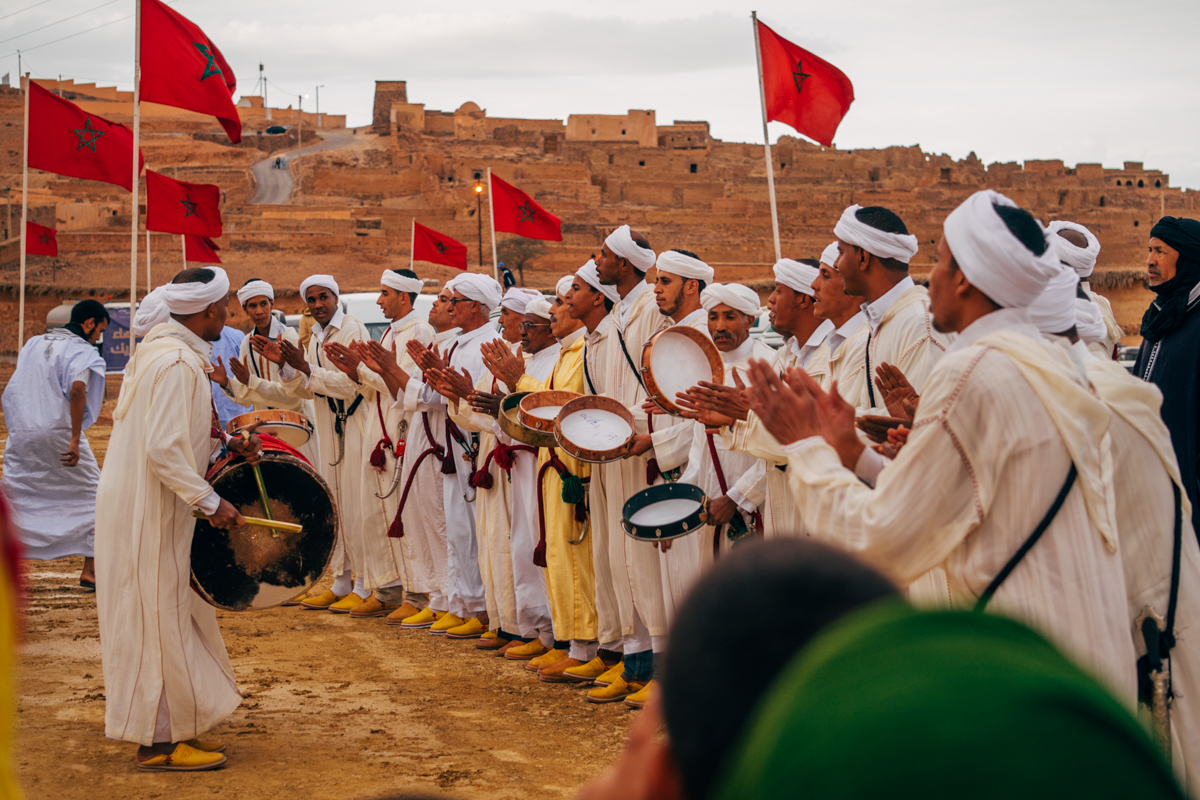
Hi! I’m a grad student at Al-Akhawayn University (MENA studies) and I found your report useful for my History of North Africa class. In the first couple of weeks, the focus was on methodological considerations. We discussed issues of historiography that historians and other social scientist have encountered in studying the modern history of the region. We discussed several articles in class, including Burke’s “Theorizing the histories of colonialism and nationalism in the Arab Maghrib” and Rollman’s “Some reflections on recent trends in the study of modern NA history.”
I was preparing to present on Rollman’s text when I remembered having come across your article last year, so I went back and dug it out. It made my presentation stress the importance of local history by giving me a concrete and contemporary case study to work from. Both Burke’s and Rollman’s papers evoke the notion of power and legitimacy in relation to writing history, and reading about how locals from Assa deserted state-sponsored activities to throw their own impromptu conference to debate Sahrawi identity hit home.
In addition, your report brought to my attention the less theoretical and more pragmatic issue for the fledging scholars of NA that my colleagues and I are: funding. I explained what Mulosige was and we went debating how we could contribute to the preservation of local history when the Moroccan state seems to care little about training and compensating social scientists to carry out that task. I am of course glad that initiatives like yours, through Mulosige, seek to bridge that gap but I am left somewhat bitter that it stems yet and again from Europe and that the endeavor is limited in time.